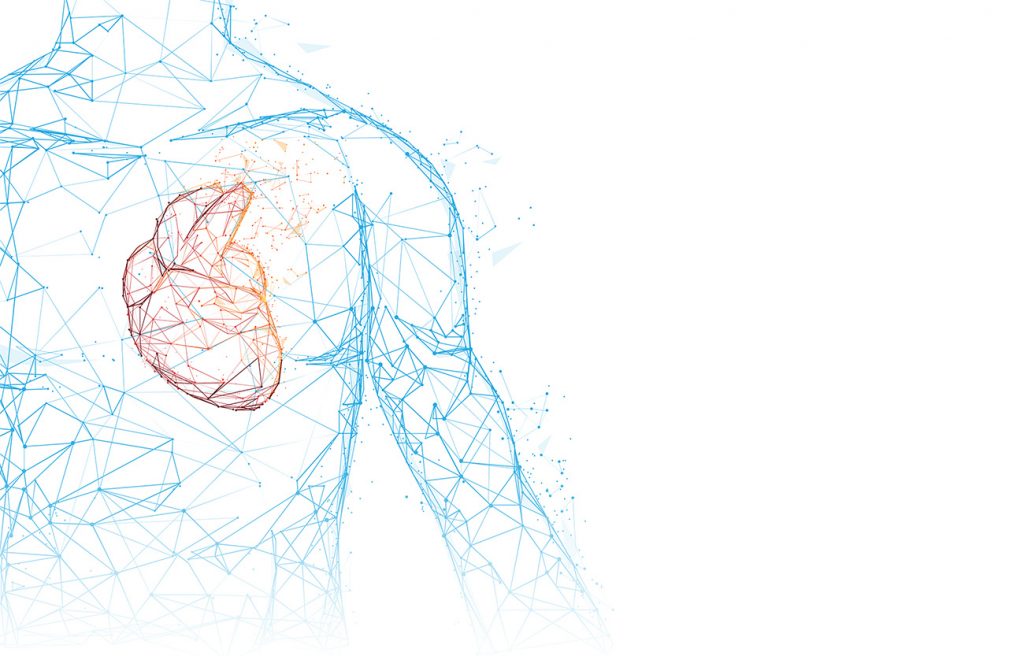Atrial fibrillation
The most common form of cardiac arrhythmia
In the course of life, the heart can get tripped up. This is usually harmless. However, caution is advised if atrial fibrillation, the most common cardiac arrhythmia, is suspected.
What is atrial fibrillation?
The sinus node, a nerve plexus in the right atrium, controls the heartbeat via electrical signals. It ensures that the heart muscle tenses and relaxes again so that the blood circulates through the body. In atrial fibrillation, this process is disturbed: the signal from the sinus node is superimposed by circling electrical impulses in the atria. As a result, the muscles of the atria tense uncontrollably: they fibrillate and the entire heart rhythm gets out of sync.
Unrecognized and untreated, it promotes the formation of blood clots.

How are atrial fibrillation and stroke related?
Stroke is one of the most serious cardiovascular diseases. As a rule, a blood clot closes an artery. As a result, the artery can no longer supply blood to the brain. This leads to disturbances or failure of various bodily and sensory functions, often with lifelong disabilities and even death. Atrial fibrillation can promote the formation of such clots.
Targeted detection of atrial fibrillation and medication to suppress blood clot formation is one of the most effective ways of preventing strokes. About one in four strokes is due to this risk factor (undetected or untreated atrial fibrillation).

What are the symptoms?
In atrial fibrillation, the heartbeat gets out of sync. The heart beats too fast and irregularly, which means that the blood is no longer pumped out of the atria sufficiently. Some people experience a kind of heart palpitations or palpitations, but in most cases, sufferers feel no symptoms at all.
Possible symptoms include:
- heart stuttering or racing,
- dizziness,
- shortness of breath,
- fatigue and occasional chest pain
- feeling of anxiety or fear
How is atrial fibrillation treated?
Atrial fibrillation is a treatable disease. This makes it all the more important to take the appropriate steps quickly. If atrial fibrillation is detected, the risk of clot formation and the risk of stroke can be significantly reduced and almost normalized, for example, by taking suitable medication (anticoagulants / blood thinners).
However, the longer a patient suffers from atrial fibrillation, the less likely it is that a physician will be able to restore a normal heart rhythm and the higher the risk of stroke.
According to the European Society of Cardiology, one in four people 40 years or older is at increased risk for developing atrial fibrillation.
(source: escardio.org)
What risk factors are associated with atrial fibrillation?
Cardiovascular diseases promote atrial fibrillation and thus also the risk of a life-threatening stroke. With these pre-existing conditions, they are at greater risk:
- Hypertension
- Diabetes mellitus
- previous stroke
- Circulatory disorders of the brain
- Arterial vessel occlusion
- Arteriosclerosis
- Narrowed coronary arteries
- Constricted leg arteries
- Heart attack
- Chronic heart failure
More detailed information on risk factors can be found on our website:

